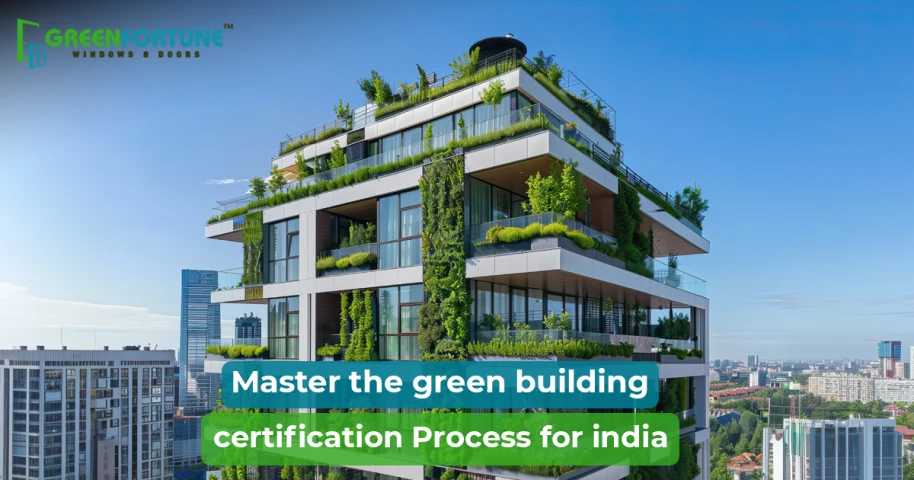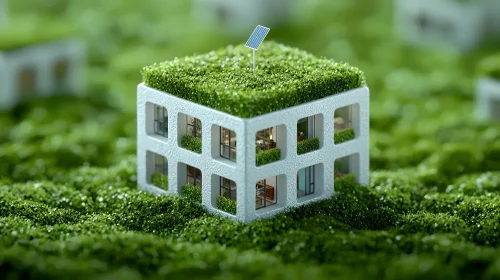
10 Hidden Dangers in Your Home That Could Be Risking Your Safety
August 14, 2025
Natural Stone Flooring Benefits for Indoor and Outdoor Spaces
August 16, 2025India’s cities are racing skyward with glass towers, sprawling housing complexes, and endless infrastructure projects. But with this rapid development comes a cost - polluted air, depleted water reserves, heat-trapping concrete jungles, and mounting energy bills. The big question is: can we construct buildings that meet modern needs while safeguarding our planet?
The answer lies in the green building certification process India - a structured way to design, build, and operate properties that respect nature, save resources, and still deliver comfort and efficiency. In this guide, we’ll walk you through the step-by-step process for 2025, helping you understand how to make your project not just another building, but a sustainable legacy.
Table of contents
- What is the Green Building Certification Process India?
- Why Certification Matters in 2025?
- Step-by-Step Guide to the Green Building Certification Process India
- Step 1: Choosing the Right Certification System
- Step 2: Pre-Assessment and Feasibility Study
- Step 3: Official Registration
- Step 4: Integrating Sustainable Architecture
- Step 5: Detailed Documentation
- Step 6: Green Construction Practices
- Step 7: Performance Testing and Commissioning
- Step 8: Submission for Review
- Step 9: Certification Award
- Step 10: Post-Certification Maintenance
- Benefits of Completing the Green Building Certification Process
- Common Challenges and Solutions
- The Future of Green Building in India
- Conclusion
- Discover GreenFortune - Your Trusted Partner for Top-quality uPVC Windows and Doors.
- FAQs
What is the Green Building Certification Process India?
The green building certification process India is essentially a formal evaluation of a building’s environmental performance. It’s not just about planting a few trees or installing solar panels; it’s a complete strategy that covers energy efficiency, water conservation, indoor air quality, waste reduction, and the use of eco-friendly materials.
The two primary systems used in India are:
- IGBC Certification Steps – Managed by the Indian Green Building Council, it offers tailored categories for residential, commercial, industrial, and institutional projects.
- GRIHA Rating System India – Developed by The Energy and Resources Institute (TERI) along with the Ministry of New and Renewable Energy, it’s widely adopted in government projects and emphasises holistic sustainability.
Both the systems have different scoring mechanisms, but the aim is the same, ensuring the built environment contributes to a healthier planet.
Why Certification Matters in 2025?
In 2025, sustainable construction is no longer a niche concept, it’s a necessity. Developers are realising that buyers and tenants prefer certified green spaces because they offer lower running costs, healthier living conditions, and a reduced environmental footprint. Governments and local authorities are also introducing incentives for projects that complete the green building certification process India, such as faster approvals, tax rebates, and better financing options.
Step-by-Step Guide to the Green Building Certification Process India
Step 1: Choosing the Right Certification System
The journey begins by selecting the appropriate rating framework. If your project focuses on modern high-rise apartments or corporate offices, the IGBC certification steps might suit you. If it’s a large institutional or government project, the GRIHA rating system in India could be a better fit. Understanding the requirements early helps shape your design strategy.
Step 2: Pre-Assessment and Feasibility Study
Before you draw up architectural plans, conduct a pre-assessment. Experts evaluate your site’s potential for natural light, ventilation, renewable energy generation, and water management. This is the moment to identify limitations and opportunities so you can avoid costly redesigns later.
Step 3: Official Registration
To formally begin the green building certification process India, you must register with your chosen body - IGBC or GRIHA. This involves filling in application forms, sharing initial project details, and paying a registration fee. In return, you’ll receive guidelines, scorecards, and documentation templates to track your progress.
Step 4: Integrating Sustainable Architecture
At this stage, sustainable architecture in India comes alive in your project. Design features may include:
- Maximising daylight to reduce artificial lighting needs.
- Installing energy-efficient systems like solar panels and high-performance glass.
- Harvesting rainwater and reusing greywater.
- Using recycled, locally sourced, and low-VOC materials.
- Landscaping with native plant species.
By embedding these principles early, your building is on track to meet high certification scores.
Step 5: Detailed Documentation
The backbone of the green building certification process India is proof. Every sustainable feature must be documented with drawings, specifications, calculations, and purchase invoices. For example, IGBC requires evidence of energy simulations, while GRIHA needs water balance reports and material sourcing records.
Step 6: Green Construction Practices
During construction, the plans must be faithfully executed. This means:
- Minimising construction waste and recycling whenever possible.
- Using dust control measures to protect workers and nearby residents.
- Ensuring contractors understand and follow sustainability protocols.
This is where good site management directly influences your final certification level.
Step 7: Performance Testing and Commissioning
After construction, the building is tested to verify performance. Energy audits measure consumption against design estimates, water flow rates are checked for efficiency, and indoor air quality tests ensure healthy conditions. These results are crucial for your final score.
Step 8: Submission for Review
Once all testing is complete, submit your compiled documentation and results to the certifying authority. They may request clarifications or additional information, and in some cases, conduct site visits to validate claims.
Step 9: Certification Award
If your project meets the benchmarks, you’ll receive certification. IGBC awards levels such as Certified, Silver, Gold, and Platinum, while GRIHA grants 1 to 5 stars. Higher ratings not only boost environmental credentials but also enhance property value.
Step 10: Post-Certification Maintenance
The green building certification process India doesn’t end with the award. Continuous monitoring ensures your building remains sustainable. This can include periodic energy audits, maintenance of water systems, and upgrading equipment as technology evolves.
Benefits of Completing the Green Building Certification Process
- Reduced Operational Costs – Energy and water savings translate into lower monthly bills.
- Healthier Living and Working Spaces – Better air quality, natural light, and reduced toxins improve well-being.
- Higher Asset Value – Certified properties command higher rents and resale prices.
- Environmental Responsibility – Lower carbon emissions and less strain on local resources.
- Incentives and Recognition – Faster government approvals, tax rebates, and marketing advantages.
Common Challenges and Solutions
- Higher Initial Costs – Offset by long-term savings and incentives.
- Lack of Skilled Professionals – Work with experienced green consultants familiar with IGBC certification steps and the GRIHA rating system in India.
- Limited Awareness – Educate stakeholders early in the process to ensure full cooperation.
The Future of Green Building in India
Looking ahead, several trends will shape the green building certification process India:
- Integration with Smart Tech – Buildings will use AI-driven systems to monitor energy and water use in real time.
- Net Zero Goals – More projects will aim for self-sufficiency in energy.
- Expansion to Rural Housing – Sustainable methods will move beyond urban centres.
- Stricter Government Policies – Stronger environmental codes will make certification even more valuable.
Conclusion
The green building certification process India is more than just a checklist. It’s a commitment to designing spaces that work in harmony with nature. Whether you choose the IGBC certification steps or the GRIHA rating system in India, the result is a building that conserves resources, enhances well-being, and stands as a model for sustainable architecture in India. In 2025, embracing these practices isn’t just good for the planet, it’s innovative business and a promise to future generations.
Discover GreenFortune - Your Trusted Partner for Top-quality uPVC Windows and Doors.
Green Fortune windows and doors, made with premium UPVC solutions specifically for each application, will add visual appeal and provide long-term performance.
Choose GreenFortune now and experience our extraordinary quality, design, and customer service.
FAQs
- What is the average cost for green building certification in India?
Costs vary by project type and certification level. Registration fees are modest, but sustainable materials and design features can raise initial expenses, which are recovered over time.
- How long does it take to complete certification?
The green building certification process India can take 6 months to 2 years, depending on project complexity, documentation readiness, and review timelines.
- Can old buildings apply for certification?
Yes, both IGBC and GRIHA offer programs for existing buildings through retrofits and operational efficiency improvements.
- Is certification mandatory in India?
While not mandatory nationwide, many states encourage it through policy benefits, and it’s increasingly becoming a market expectation for premium projects.
green building certification process in India









